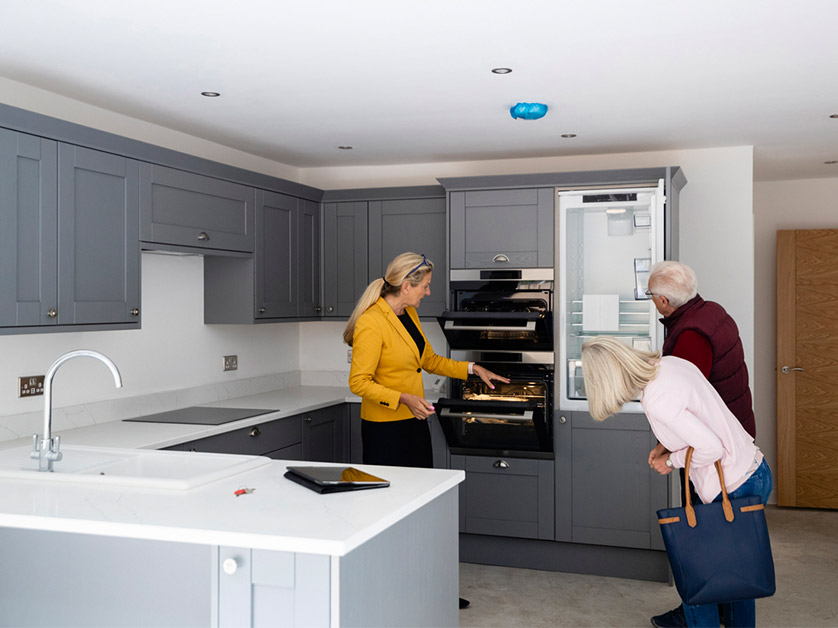Living in place is a concept that encourages putting accessibility and comfort at the forefront, regardless of age or mobility. Having a kitchen that’s easy to navigate can elevate your everyday life, making cooking and gathering more enjoyable for everyone. In this article, The Kitchen Store provides tips on how to design an aging-in-place kitchen.

Work With Kitchen Remodeling Experts
Designing an accessible kitchen can be challenging. Thankfully, a kitchen remodeling expert can help you create an accessible space that accommodates every member of the household regardless of age or physical ability. By partnering with a team of specialists, you can gain access to professional advice, resources, and support to help you make informed decisions for your kitchen remodel.
Optimize Layout and Traffic Flow
A well-designed kitchen should be easy to navigate, with clear pathways allowing multiple occupants to move freely. Choose a layout offering wide walkways, ideally at least 42 inches wide. Arrange cabinets, appliances, and countertops to minimize the need to reach, bend or walk excessively, all of which can be troublesome for those with limited mobility.
Choose Appropriate Countertops
When planning a kitchen remodeling project, countertops deserve special attention. Aside from aesthetics, consider height, depth, and material when selecting countertops. Multi-level countertops accommodate various tasks and user heights while ensuring the kitchen’s usability for family members of varying stature and ability. Opting for surfaces with rounded edges can reduce the risk of injury from accidental bumps.
Ensure Ample, Adaptable Lighting
An essential aspect of any interior design is proper lighting. Combining ambient, task, and accent lighting ensures that all kitchen areas are well-lit, reducing the risk of accidents due to poor visibility. Moreover, select fixtures that adapt to users’ needs and preferences, such as adjustable or dimmable lighting.
Prioritize Accessibility and Storage
Accessible storage is critical for individuals with limited mobility or diminished dexterity. Incorporate easy-to-reach cabinets with pull-out shelves, adjustable-height shelves, and drawer organizers to accommodate users. Consider installing appliances at comfortable heights and choosing models that offer easy-to-use controls.
Incorporate Universal Design Principles
Universal design principles ensure a kitchen remains functional and appealing to all users. Features such as lever-style door handles, easy-to-grip drawer pulls, and non-slip flooring promote accessibility and safety. When fully integrated, these aspects of universal design create an inclusive environment that benefits every individual who uses the kitchen.
Create an Amazing Kitchen for Living in Place
For top-notch kitchen remodeling services in Los Angeles and Culver City, CA, turn to The KItchen Store. Schedule a consultation by calling (310) 572-7515 or filling out the form on our contact page. Let’s work together to create a kitchen space that’s both stylish, safe and accessible for everyone in your household.



